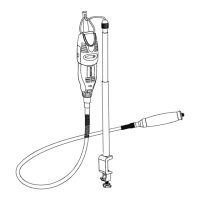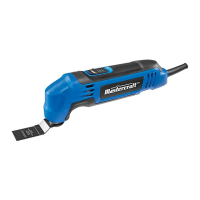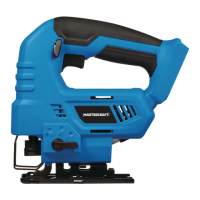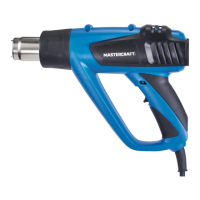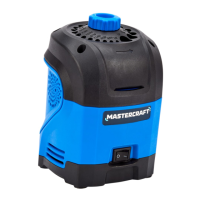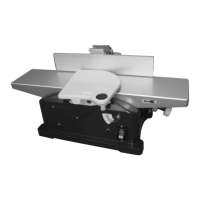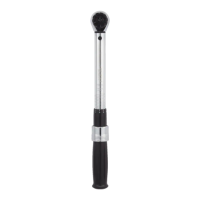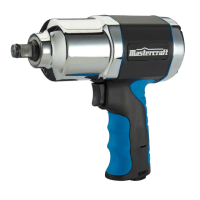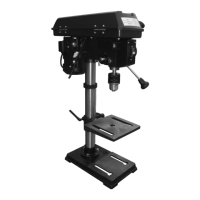Push the selected deector (1) onto the small end
of the heat gun nozzle (2) (Fig. 3).
NOTE: The deector is simply a friction t so it
must be rmly pressed onto the small end of the
nozzle.
Using safety stand when hot
When heat gun is hot, always place it up side
down on its safety stand (1) (Fig. 4).
Stripping paint from dwelling
The most common application for the heat gun is
in stripping paint from fascia, soft and siding of a
dwelling (Fig. 5). Although the heat gun will work
extremely well in this application, it is important to
take specic precautions and prevent potentially
serious mistakes.
WARNING: Use extreme
caution if the opposite side of the work surface
such as siding is not accessible. The hidden
side could catch re if it becomes too hot. Some
buildings contain ammable material behind
siding, oors, fascia, soft boards and other
such panels. Check these areas before applying
heat. Do not use the heat gun if ammable
materials are present or if you are unsure of the
ammability of the hidden material.
Do NOT use the heat gun on surfaces that can
be damaged by heat, such as vinyl siding, vinyl
coated siding or vinyl window frames.
Do NOT use the heat gun on any glass surface
such as windows. The rapid expansion may break
the glass or damage the seal in thermo pane
windows.
18
The heat gun will soften putty in window frames.
Be careful not to gouge the soft putty with the
scraper. The putty will rm up as it cools.
When removing paint from the fascia, do not
overheat the edge of the shingles. Too much heat
will melt the shingles.
Paint stripping process
WARNING: Never touch the
heat gun nozzle during use or soon after use. It
becomes very hot and will cause severe burns.
Wear gloves to protect your hands from hot paint
scrapings.
When turned ON, the heat gun will heat the paint
causing it to soften so it can be easily scraped off
without damaging the surface. Some paints may
soften when heated even though they show no
signs of blistering. Some paints will blister when
heated, while others may become rubbery. Some
paints will require more heat than others to soften
them sufciently for easy removal.
NOTE: Paint that has been absorbed into the wood
will not be removed with the heat gun.
When working with several layers of paint,
completely heating the surface all the way to the
wood will speed up the scraping process. This will
allow all layers of paint to be scraped at one time.
Use a soft wire brush to remove paint from very
intricate surfaces. Mineral paints and nishes
such as cement paint and porcelain do not soften
when heated, so they cannot be removed using a
heat gun.
OPERATING INSTRUCTIONS
19
OPERATING INSTRUCTIONS
HEAT GUN 054-1252-6
HEAT GUN 054-1252-6
g. 3
g. 4
Fascia
Soft
Siding
Inside
wall
g. 5
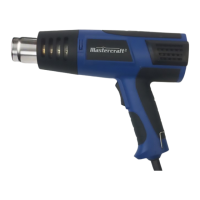
